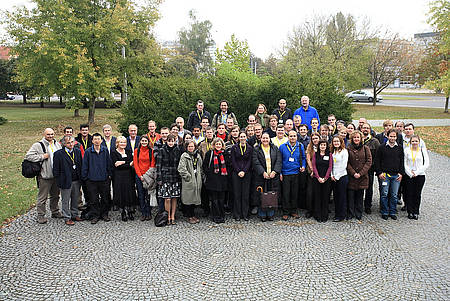
SONS EUROCORES Programme aimed to develop cross-disciplinary research at the interface between Chemistry, Materials Science, Nanoscience, Physics and Electrical Engineering.
This research programme concerned the utilization of supramolecular interactions for the synthesis and positioning of functional assemblies, macromolecules, dendrimers, liquid crystals, tailor-made polymers and inorganic nanoparticles.
Self-organization is a process in which a supramolecular organization is established in a complex system of interlocking components. The mechanism that produces the organization is determined by the competing interactions between the components. The hierarchy of interactions determines the hierarchy of levels in the final nanostructured material. Thus self-organizing compounds allow a defined and well-controlled construction of ordered architectures on a nanometer-scale.
Highlights |
SONS 2 Final Conference
SONS 2 held the final conference in Prague from the 19-21 October 2009. About 80 scientists of all seven collaborative research projects gathered to present the progress since the beginning of the programme and outline future research directions.
Oral and poster presentations including international invited speakers covered a broad range topics from molecular self-assembly and supramolecular organization on surfaces, to complex liquid crystals structures and organic materials for opto-electronics. A number of presentations dealt with aspects of self-organization at the nanoscale in different systems describing synthesis and propeties of nanoporous materials, nano-wires, nanotubes, quantum dots, nanoparticles in liquid crystal and polymer matrices and hybdrid organic-inorganic nanostructures.
The fields of application for these materials are extremly broad and it is expected that the results obtained in SONS 1 and 2 will contribute to the developement of new and more efficient energy harvesting systems such as solar cells, high-performance organic light-emitting and molecular electronic devices, high-density magnetic memory storage devices, and targeted drug delivery and cancer therapy tools.
For more information on the conference programme please visit the conference webpage and the picture gallery.




